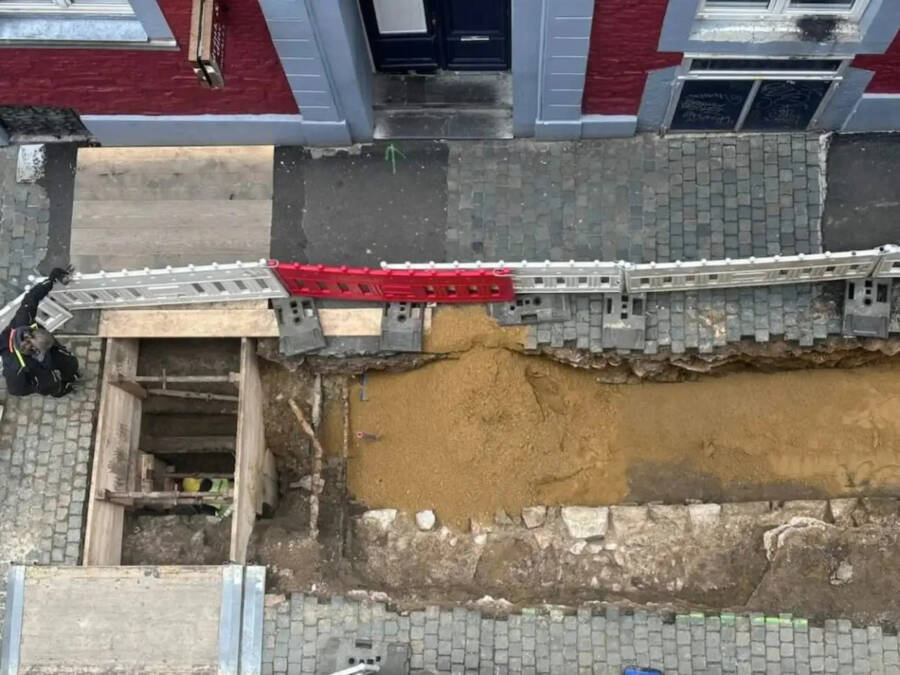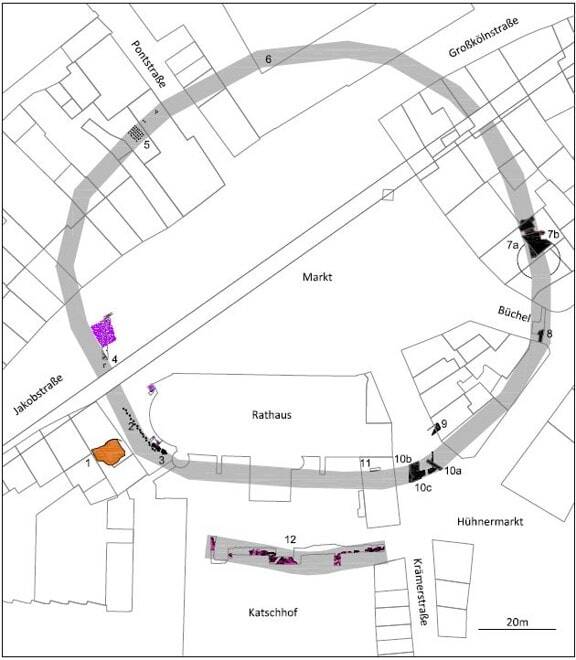For over 140 years, residents of Aachen, Germany, believed that their town sat atop an ancient Roman fort. Now, a recent construction project has just revealed that rumor to be true.

Stefan Herrmann/City of AachenAn overhead view of the excavation site.
Archaeologists have uncovered a 1,700-year-old Roman fortress in the center of Aachen, Germany. The fort, believed to have been built to deter barbarian raids, was the subject of a rumor floating around the town for about 140 years.
Finally, residents have confirmation that the rumors are true and that a magnificent Roman fort once stood in the city’s center.
Confirming A Century-Old Myth

Stefan Herrmann/City of AachenResearchers stand next to the wall of the fort.
Beginning about 140 years ago, residents of Aachen, Germany — a city near the Belgium-Netherlands border in western Germany — believed that their town once housed a magnificent Roman fortress.
However, the rumors had never been confirmed — until a construction project unearthed a surprising discovery this year.
According to a city press release, the utilities and construction company Regionetz is working on renewing water, gas, and electricity supply lines in the area. In conjunction with this project, the team partnered with the archaeology group sk ArcheoConsult to comb the site for artifacts.
The archaeologists were recently excavating an area in Aachen’s city center when they came across the ruins of an old stone wall. They immediately identified it as Roman.
“During the repair of a canal house connection, the foundation of a mighty masonry was exposed, which due to the construction technology must be of Roman era,” Dr. Donata Kyritz, an archaeologist and the owner of sk ArcheoConsult, stated in the city’s press release.
“The way the wall was built left no doubt it had to be of Roman origin,” Dr. Kyritz told Live Science. “The concrete-like mortar and the choice of rock was typical for the Roman period. Also, the dimensions and the way the foundation was built differed from the technique used in medieval times.”
Finally, the 140-year-old rumor had proven true.
Inspiring Further Research

Andreas Schaub/City of AachenA drawing showing the possible shape of the Roman walls beneath the modern city center.
So far, archaeologists have excavated a 23-foot-long and 35-inch-wide piece of wall at the site, as well as pottery and animal bones. As of now, researchers still do not know the total length of the structure.
Romans likely built the wall in the third century C.E. in light of increased barbarian raids. According to the city’s press release, Frankish raids had completely destroyed the city around 275 C.E., inspiring Romans to build a defensive fort called a castrum around the city’s market square.
“We know that the castrum was built as a reaction [to] raids by Germanic tribes around 275 and 276 A.D.,” Andreas Schaub, an archaeologist working on the excavation, told Live Science. “We don’t know if there were many soldiers to run the castrum or if the inhabitants had to defend themselves. But what we know is that it works. We have no indication of any big destruction after the castrum was built.”
The castrum, which comprised a wall, towers, and an almost 20-foot-wide ditch, stood in the town’s city center until city inhabitants demolished it in the 12th century.
No one knew exactly where it had stood — until archaeologists discovered remnants of the ditch in 2011.
Now, researchers believe that the fort may surround the city’s center in a circular shape. Further excavations are required to find the true size and shape of the wall.
Archaeologists are working in tandem with Regionetz to complete the excavation. According to the city’s press release, archaeologists will continue to research as much of the wall as possible before deciding on a preservation method. Then, Regionetz plans to complete the construction project as originally planned.
After reading about the Roman fort, dive into the story of the Edinburgh Castle, Scotland’s medieval fortress that still stands today. Then, read the creepy story of Houska Castle, the 13th century castle designed to trap evil spirits.





